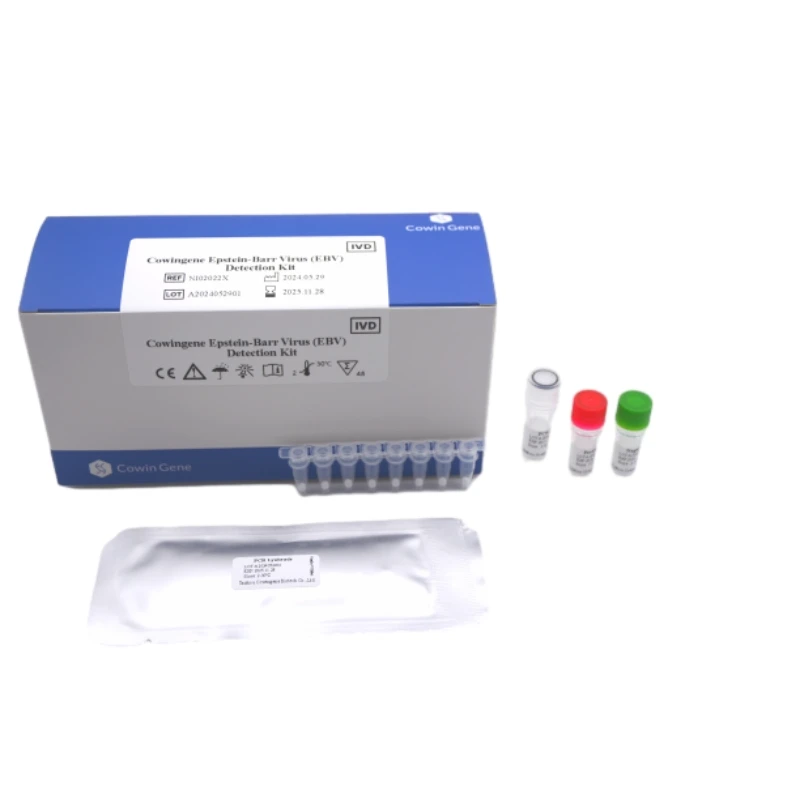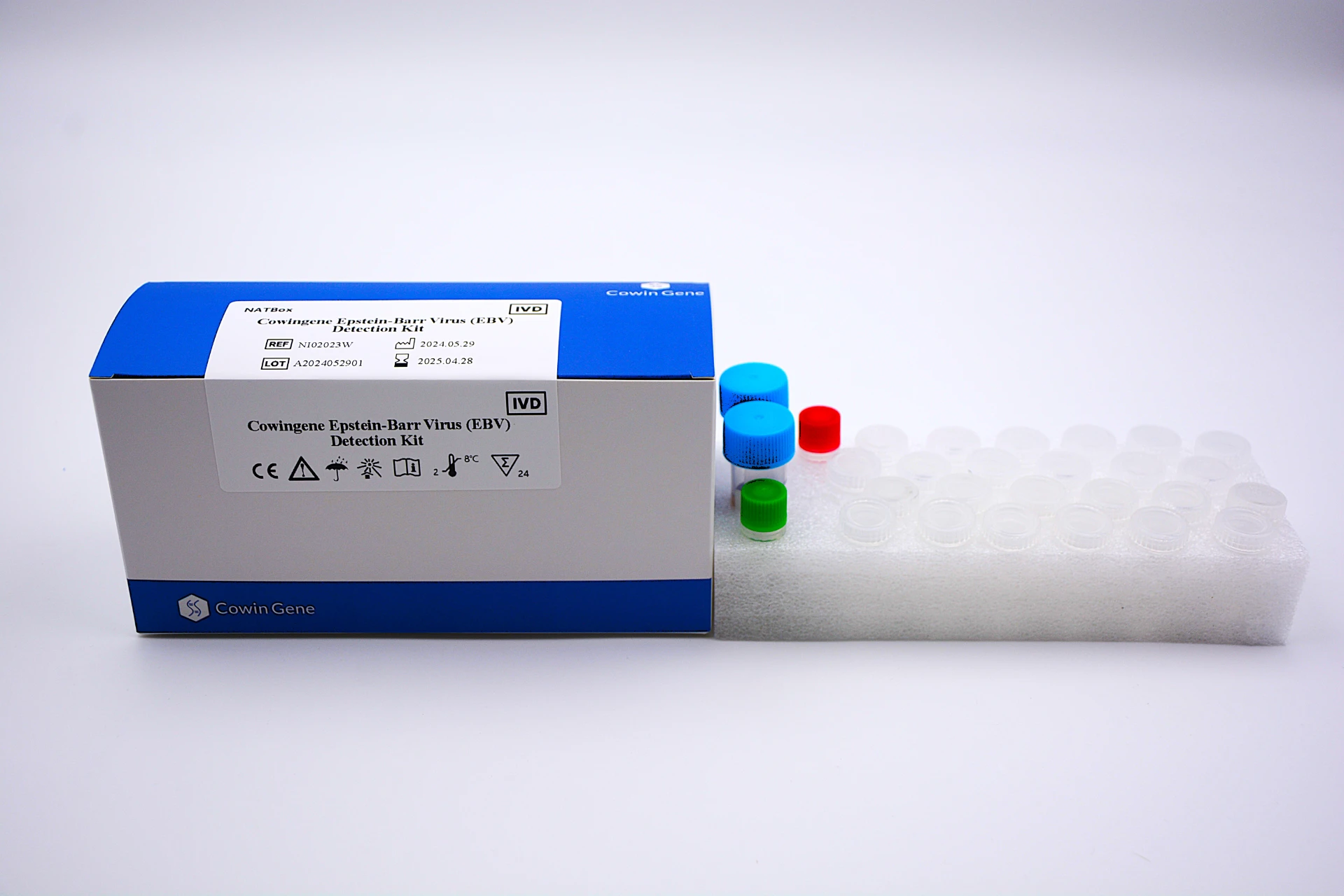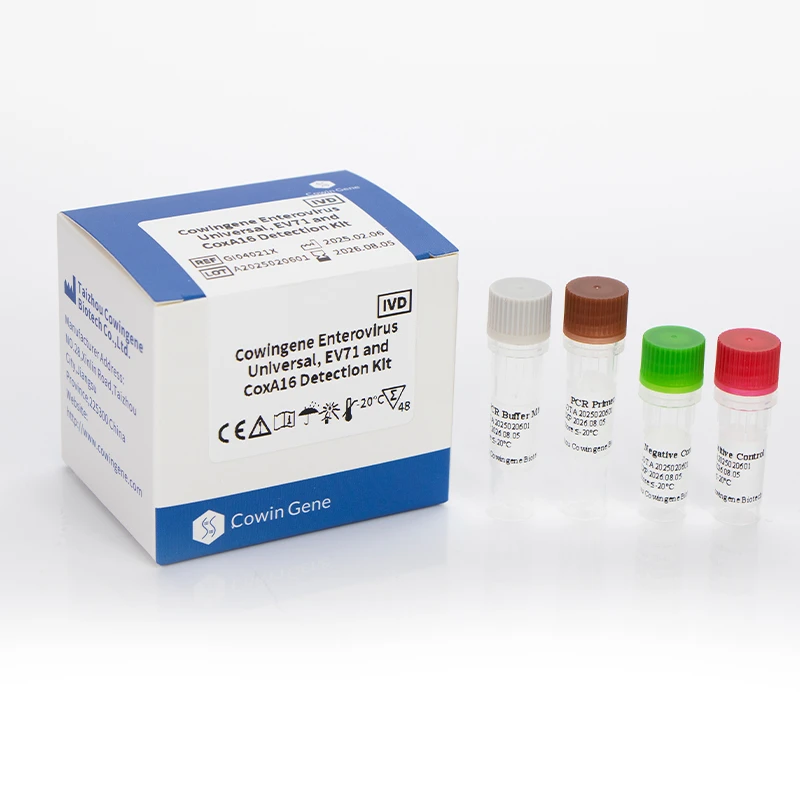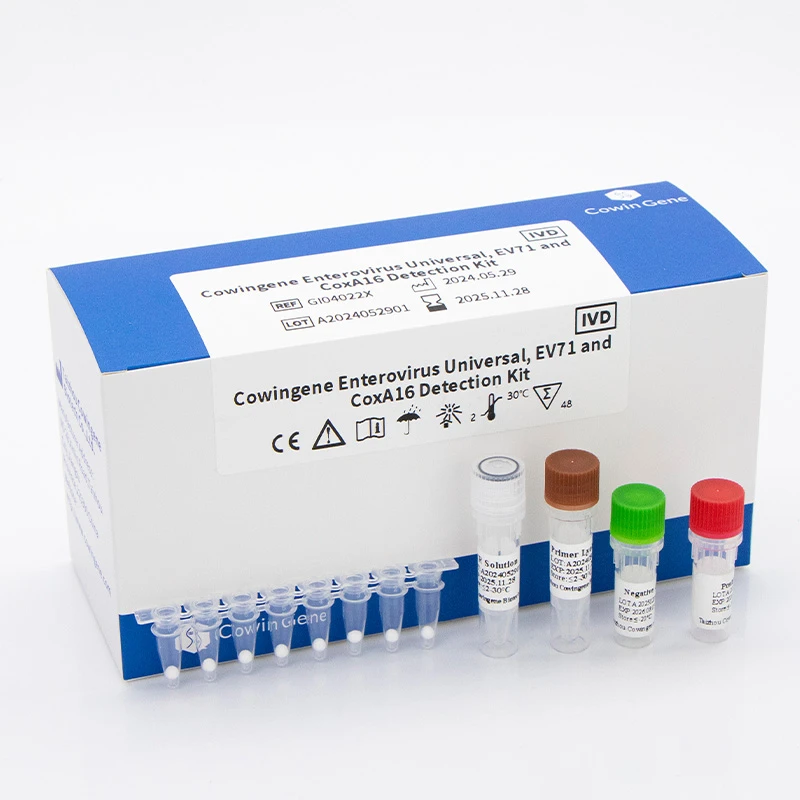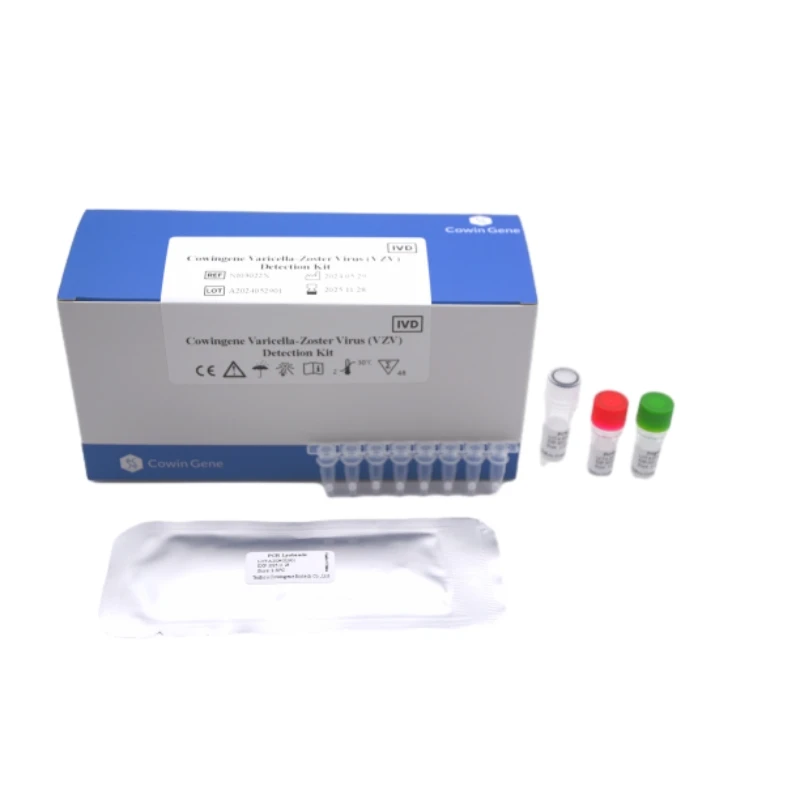Nov . 18, 2025 14:00 Back to list
PCR for Herpes Testing – Fast, Accurate Viral Diagnostics for Global Health
Understanding PCR for Herpes: Why It Matters More Than Ever
So, you’ve probably heard of PCR, right? It sounds technical — which it is — but at its core, it's a way to spot viruses like herpes under a molecular microscope. The PCR test for herpes has become a crucial tool globally, not just for labs but also for public health, clinics, and even humanitarian missions. Why? Because herpes simplex virus (HSV) infections are widespread and often silent, but knowing for sure who carries the virus can transform treatment and prevention efforts worldwide.
Globally, somewhere around 3.7 billion people under 50 have HSV-1, according to the WHO. HSV-2—the more genital type—affects hundreds of millions. Those are huge numbers, and managing such a silent epidemic means modern diagnostic approaches like PCR for herpes don't just matter, they are game changers.
Mini takeaway: PCR for herpes isn’t just a lab experiment. It’s a frontline ally in global health, helping detect a widely prevalent virus early and accurately.
Setting the Scene: How PCR Tests for Herpes Fit into the Global Health Puzzle
Imagine a world where viral infections could be consistently misdiagnosed just because of outdated testing. That’s kind of where herpes testing was until PCR came around. Its global relevance goes beyond basic healthcare — it impacts sexual health education, (especially in regions with limited access to diagnostics), and public policy. Data from UNAIDS and WHO reinforce this urgency given herpes’ role in increasing HIV transmission risk.
Yet, difficulties arise: conventional blood tests measure antibodies that might appear late or remain ambiguous; viral cultures are slow and sometimes inconclusive. PCR for herpes solves these headaches by amplifying the viral DNA directly, delivering much faster and more precise results.
Mini takeaway: Globally, PCR for herpes helps overcome diagnostic challenges, aiding timely interventions and better disease control.
What Is PCR for Herpes? Breaking It Down Simply
PCR stands for Polymerase Chain Reaction—a technique that copies (or "amplifies") tiny snippets of DNA. For herpes testing, PCR zooms in on the virus’s DNA itself, even if it’s barely present in the sample. Unlike antibody tests, it's like having a super high-powered magnifying glass to catch herpes in the act.
Why does this matter? Because herpes can be sneaky, sometimes latent or causing mild symptoms that patients overlook. PCR directly detects the viral genetic material during active infection or even asymptomatic shedding. It’s increasingly indispensable for modern medical and humanitarian needs—helping doctors make informed decisions rapidly.
Mini takeaway: PCR for herpes is a DNA-based method that detects infection more directly and reliably than older methods.
Key Elements of Effective PCR Testing for Herpes
1. Sensitivity & Accuracy
Simply put, PCR is amazingly sensitive. It picks up even minuscule amounts of herpes DNA, making false negatives rare. That precision is vital for early diagnosis, especially when symptoms are mild or absent.
2. Speed of Results
Traditional cultures can take days, antibody tests weeks. PCR can return results within hours, saving time and guiding immediate care.
3. Sample Types and Collection
PCR testing works with vesicle fluid, swabs from lesions, cerebrospinal fluid, even blood in some cases—versatility counts in real-world settings.
4. Cost Efficiency
While PCR seems expensive, when you factor in avoiding misdiagnoses and unnecessary treatments, it costs less in the long run.
5. Scalability for Various Settings
From urban hospitals to remote clinics, PCR testing methods have adapted — with portable kits or centralized labs — which is quite a feat.
6. Quality Control & Standardization
Reliable results hinge on standardized protocols and trained personnel, especially in resource-limited areas.
Mini takeaway: PCR testing for herpes stands out for sensitivity, speed, and adaptability across different healthcare environments.
Where Is PCR for Herpes Making a Real Difference?
In the U.S. and Europe, PCR is routine in hospitals and STD clinics. But oddly enough, its power shines brightest where challenges are greatest: rural Africa, parts of Asia, and Latin America. Organizations like Doctors Without Borders leverage PCR to screen pregnant women, preventing neonatal herpes, which can be devastating.
In conflict zones, rapid PCR testing helps differentiate herpes outbreaks from other skin conditions, preventing misdirected treatments. In post-disaster areas with compromised sanitation, PCR’s precision enables targeted care, saving limited resources and protecting vulnerable populations.
Mini takeaway: PCR for herpes bridges critical gaps in healthcare accessibility and accuracy across diverse global contexts.
Why PCR for Herpes Is Worth It: Benefits Beyond the Numbers
- Cost-effectiveness: Earlier diagnosis saves costly complications.
- Patient Safety & Trust: Accurate results reduce anxiety and stigma.
- Public Health Gains: Better identifications mean targeted interventions and reduced transmission.
- Innovation Driver: PCR testing blazes a trail for other rapid diagnostics.
- Long-Term Sustainability: PCR protocols evolve with new tech, promising ongoing utility.
Honestly, it feels like PCR opens a door that’s been locked too long, giving patients and doctors a clearer roadmap to navigate herpes management.
Looking Ahead: Future Trends in PCR for Herpes
We’re beginning to see portable PCR devices, some handheld, that promise bedside diagnostics in minutes. Integration with smartphone apps for data tracking is also on the rise, enabling real-time epidemiology. Meanwhile, automation in labs speeds up throughput dramatically. On a green note, new reagents with reduced environmental impact are under development.
Additionally, worldwide health policies are increasingly embracing PCR testing in prenatal care programs to combat neonatal herpes globally. It's a neat example of technology, policy, and social good aligning.
Mini takeaway: PCR for herpes is not a static field—it’s evolving with digital, sustainability, and automation trends to become even more accessible.
Challenges with PCR Herpes Testing—and How We’re Fixing Them
The main hurdles? Costly equipment, training requirements, and sometimes limited access in the hardest-to-reach areas. Also, contamination risks can cause false positives if labs aren’t meticulous.
Innovations like lyophilized reagent kits (that don’t need refrigeration), simplified workflows, and mobile lab units are lowering these barriers. Plus, organizations are ramping up training programs for local healthcare workers.
Mini takeaway: While PCR for herpes faces real-world challenges, ongoing innovations and education are making it more viable everywhere.
FAQ: Your Practical Questions About PCR for Herpes
- Q: How soon after exposure can PCR detect herpes infection?
- A: PCR can detect herpes DNA within 1 to 2 days of lesion appearance. Even before symptoms fully develop, PCR often identifies infection, helping start treatments promptly.
- Q: Is PCR testing for herpes painful or invasive?
- A: Not really. Most samples come from swabbing affected areas, like sores or lesions. It's quick and minimally uncomfortable — much less than you might imagine.
- Q: Can PCR differentiate between HSV-1 and HSV-2?
- A: Yes. Modern PCR assays are designed to distinguish the two types, which is important since they have different clinical implications.
- Q: Is PCR testing for herpes suitable in low-resource settings?
- A: Increasingly yes. New portable tests and simplified protocols are closing the gap, though wide adoption still requires investment.
- Q: How reliable is PCR compared to older testing methods?
- A: PCR is considered the gold standard for detecting active herpes infection due to its high sensitivity and specificity, outperforming traditional culture or serology tests.
Product Specification Table: Typical PCR Kit for Herpes Diagnosis
| Specification | Details |
|---|---|
| Detection Method | Real-time PCR (qPCR) |
| Sample Types Accepted | Lesion swabs, cerebrospinal fluid, blood (rare) |
| Time to Results | 2–4 hours (lab-based) |
| Limit of Detection | ~10–100 copies of viral DNA per mL |
| Storage | Room temperature or refrigerated depending on reagent kit |
| PCR Machine Compatibility | Compatible with most qPCR thermocyclers |
Vendor Comparison Table: Leading PCR Herpes Test Providers
| Vendor | Test Accuracy | Turnaround Time | Portability | Price per Test |
|---|---|---|---|---|
| GeneXpert (Cepheid) | >98% | 45 mins | Moderate (desktop device) | $20–30 |
| Bio-Rad CFX96 | >97% | 2–3 hours | Low (lab-bound) | $10–15 |
| Abbott m2000 | ~98% | 3–4 hours | Low | $12–20 |
| Cepheid GeneXpert Omni (mobile) | >95% | 30–40 mins | High (handheld) | $25–35 |
Wrapping It Up: Why PCR for Herpes Should Be on Your Radar
We’ve come a long way from relying solely on slow cultures and late antibody tests. PCR for herpes serves as a beacon in viral diagnosis—fast, precise, and increasingly accessible. Its impact spreads across clinical care, public health, and humanitarian relief, helping millions worldwide with accurate diagnosis and better management.
Thinking about incorporating PCR testing or upgrading existing protocols? Visit pcr for herpes for expert insights and products that make a difference.
After all, in the fight against widespread infections like herpes, clarity and speed aren’t just nice to have—they’re a necessity.
References
Related PRODUCTS
-
Understanding Monkeypox Testing PCR – Global Health & Diagnostic Insights
NewsNov.24,2025 -
Comprehensive Guide to Monkey Pox Detection: Methods, Applications & Innovations
NewsNov.23,2025 -
Essential Guide to Monkeypox Detection: Technologies, Applications & Future Trends
NewsNov.23,2025 -
Understanding Strep B Test Cost: Global Insights and Healthcare Impact
NewsNov.22,2025 -
Group B Strep DNA Test – Fast, Accurate Screening to Prevent Neonatal Infection
NewsNov.21,2025 -
Essential Guide to Group B Strep Test Kits: Benefits, Uses & Innovations
NewsNov.20,2025


